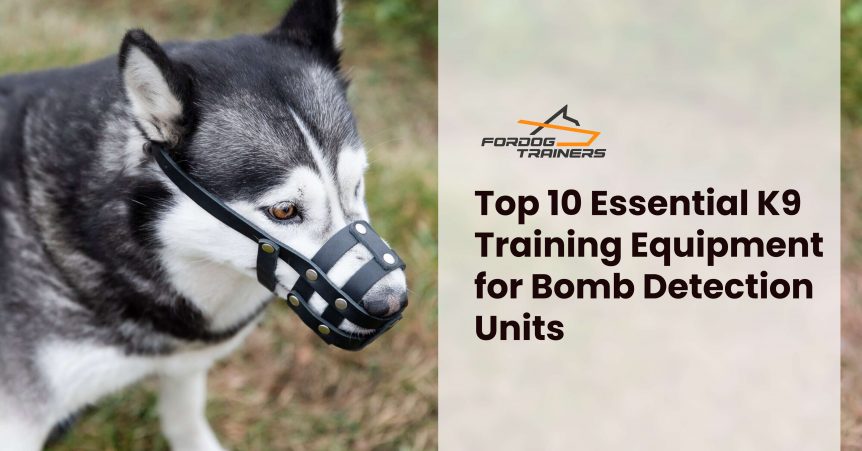K9 bomb detection units play a crucial role in keeping our communities safe. These highly trained dogs and their handlers work hard to find explosives and prevent potential disasters. To do their job well, they need the right tools. Let’s look at the top 10 essential pieces of equipment that help K9 bomb detection units do their important work.
Contents
Key Points: K9 Bomb Detection Teams
- 97.5% success rate in detecting explosives
- 4-5 times more effective than mechanical detection methods
- Can detect explosive odors as low as 1-2 parts per trillion
- Undergo 10-16 weeks of initial training
- Use specialized equipment like protective vests and GPS tracking collars
1. Protective Gear for K9 Units
Keeping our four-legged partners safe is really important in bomb detection work. That’s why protective gear is number one on our list. K9 units need special vests that can protect them from harmful substances and dangerous objects they might find during their searches. These vests are usually made from light, strong materials that protect the dogs without making it hard for them to move or smell things.
One of the most important pieces of protective gear is an adjustable nylon harness. These harnesses are made to be comfortable for the dog while also providing a secure place to attach leashes and other equipment. They’re great for different training exercises and real-world operations. The fact that they can be adjusted means they can fit dogs of different sizes, which is really important for their comfort and safety during long working hours.
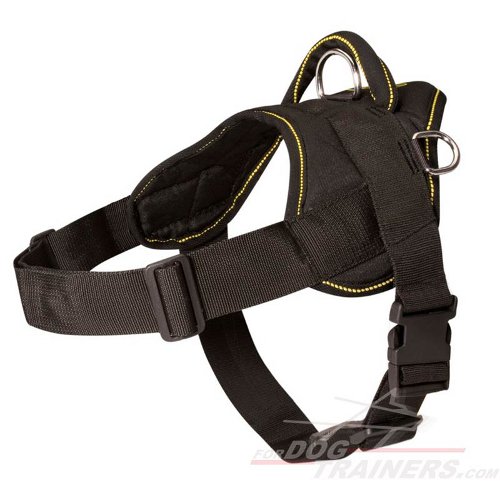
2. Scent Kits and Training Aids
To become expert bomb detectors, K9 units need to practice with lots of different smells. Scent kits and training aids are really important tools that help dogs learn to find different types of explosives. These kits have safe, non-explosive materials that smell like real bombs. The scents are carefully made to represent different explosive compounds, helping dogs build a big “scent library” in their memory.
Along with scent kits, flexible dog training poles are really helpful for scent work. These poles let handlers present scents to their dogs in different positions and heights, making training more challenging and realistic. By changing how they present scents, handlers can make sure their dogs are ready for any situation they might face in real life.
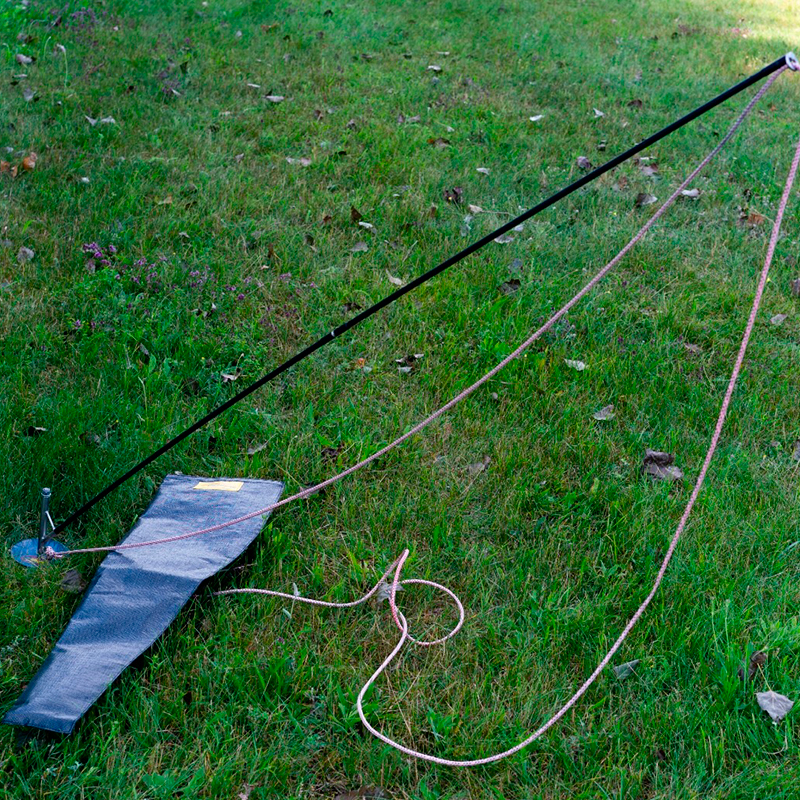
3. HS Neck Tech Prong Collar – Stainless Steel – Made in Germany
Herm Sprenger Collars are famous all over the world for an excellent quality and interesting design. We want to bring to your attention this very popular Neck Tech Stainless Steel Dog Pinch Collar. It was designed in best traditions of producing Pinch Collars.
The main thing of the collars of such a kind is that they have prongs evenly arranged on the inner surface of the collar. These prongs pinch right to the skin on the dog’s neck, providing training effect. However, they work not through pain but through instinctive dog’s behavior, thus training the dog in natural manner, that is like mother-dog teaches her child to obey. Moreover, these prongs avoid dogs fur so they are equally effective for longhaired breeds as well.
4. Specialized Training Equipment
Bomb detection dogs need to be quick, obedient, and focused. Specialized training equipment helps develop these skills. Two important pieces of equipment are Schutzhund training blinds and jumps. These tools are essential for creating realistic training scenarios that prepare K9 units for the challenges they’ll face in real-world situations.
Schutzhund training blinds are used for search exercises. They help dogs practice finding hidden objects or people in different scenarios. These blinds are strong and can be set up in various ways to create challenging search environments. By regularly training with these blinds, dogs learn to systematically search areas and show when they’ve found a target scent.
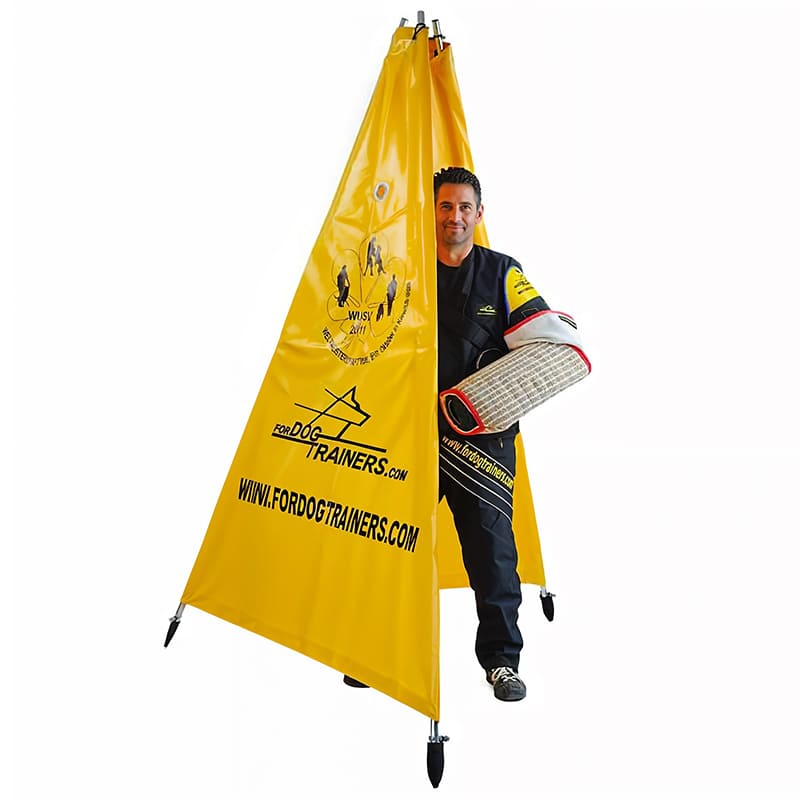
Schutzhund jumps are great for building agility and obedience. These jumps help dogs learn to navigate obstacles quickly and safely, which is crucial when searching through complex areas. Regular training with jumps ensures that K9 units can efficiently move through various terrains and overcome physical barriers they might encounter during real searches.
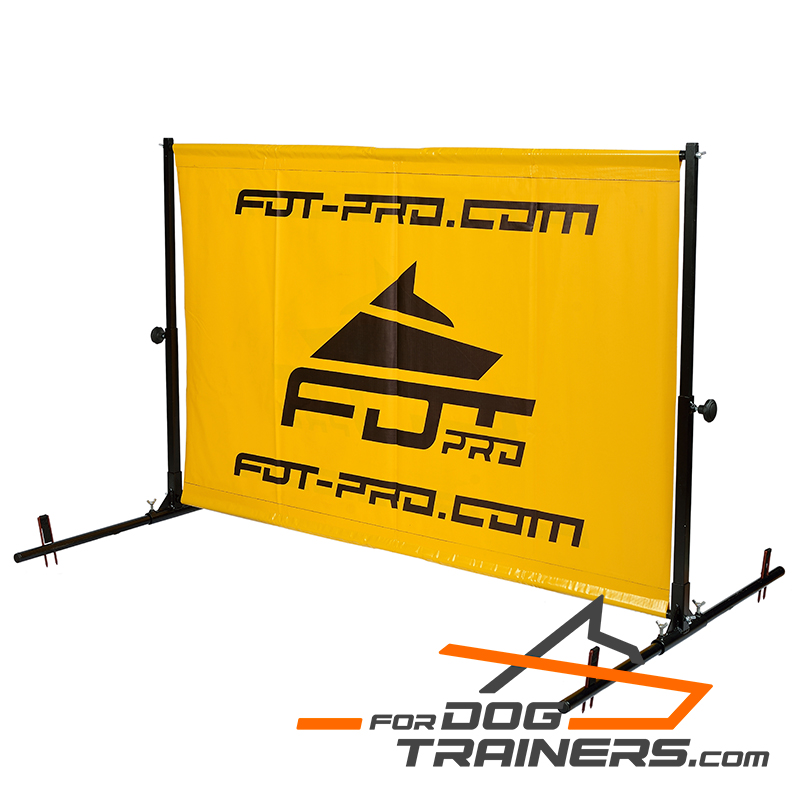
5. Leashes and Control Equipment
Good control is really important in bomb detection work. Handlers need to guide their dogs precisely, especially in tight or crowded spaces. That’s why high-quality leashes are a must-have for K9 units. The right leash helps the handler and dog communicate clearly, allowing for subtle cues and quick responses.
Durable leather leashes are popular among K9 handlers. They’re strong, comfortable to hold, and give handlers excellent control over their dogs. Different types of leashes are used for various training scenarios and real-world operations. For example, longer leashes might be used for open-area searches, while shorter leashes are better for close-quarters work. Some handlers also use special tactical leashes that can quickly change from standard to hands-free setups.
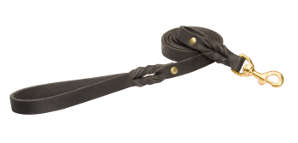
6. Bite Tugs and Training Pads
While bomb detection dogs aren’t usually trained for bite work, bite tugs and training pads are still useful tools. They help build jaw strength and teach dogs to grip and release on command. These skills can be helpful in certain search scenarios, such as when a dog needs to move small objects or show they’ve found something by grabbing a specific toy.
Bite pads come in different materials and sizes. They’re used to develop and maintain bite strength, which can be useful if a dog needs to grip and pull objects during a search. Training with bite tugs and pads also helps strengthen the bond between handler and dog, as these exercises often involve play and positive reinforcement.
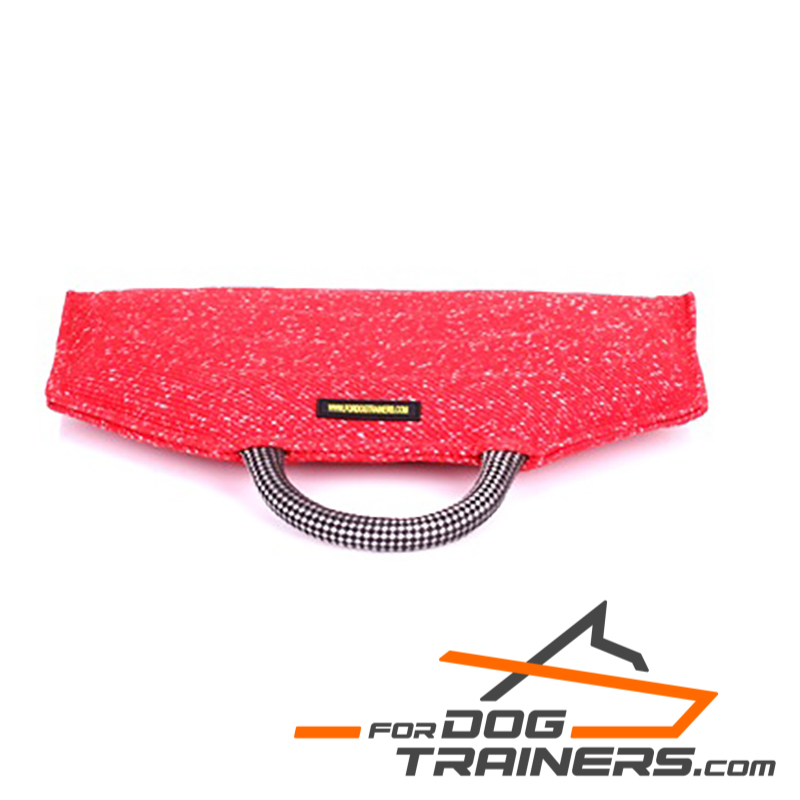
7. Rotating Dog Training Tether Poles
Focus and obedience are key for bomb detection dogs. Rotating dog training tether poles are great tools for building these skills. They allow dogs to move in a controlled circle while practicing various commands and behaviors. This type of training helps dogs learn to pay attention to their handler and ignore distractions, which is crucial in high-stress environments.
Durable tether poles can be set up in different locations, helping dogs learn to stay focused in various environments. This is really important for bomb detection work, where dogs need to stay on task even with lots of distractions around. Training with tether poles also helps build endurance, as dogs can practice maintaining focus for long periods.
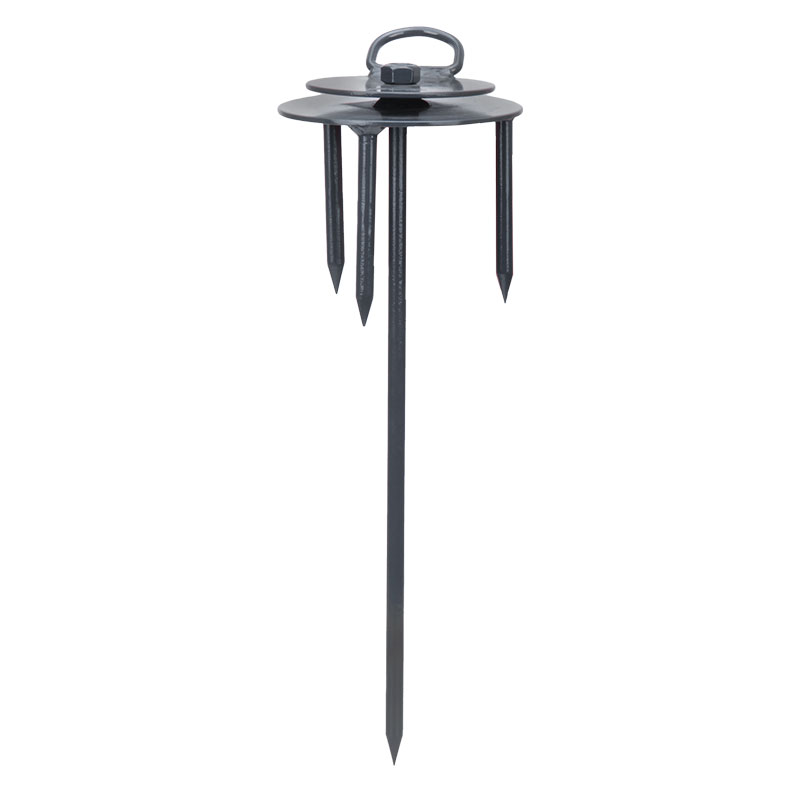
8. Health and Safety Equipment
Keeping K9 units healthy and safe is crucial. Regular health check-ups are a must, and handlers need to be prepared for any emergencies that might happen during training or operations. This category of equipment includes first-aid kits specially designed for dogs, as well as tools for checking the dog’s vital signs during and after intense work sessions.
Safety equipment includes things like muzzles, which can protect dogs in certain situations, and special kits for cleaning and decontaminating dogs after they’ve been exposed to potentially harmful substances. Proper grooming tools are also essential to keep the dog’s coat and skin healthy, especially after working in harsh environments.
9. Scent Detection Targets
To train bomb detection dogs effectively, handlers need a variety of safe, non-explosive scent targets. These targets smell like different explosives, helping dogs learn to identify a wide range of potential threats. Using diverse scent targets ensures that dogs can recognize explosives in various forms and concentrations.
Scent detection targets come in various forms, from small vials to larger containers. They’re carefully designed to be safe for training while still providing an accurate scent profile for the dogs to learn. Some advanced training programs use scent wheels or carousels that can present multiple scents quickly, helping dogs learn to tell the difference between similar odors.
10. Reward and Motivation Tools
Last but not least, reward and motivation tools are essential for K9 bomb detection units. These can include special toys, treats, or praise techniques that handlers use to encourage good behavior and keep their dogs excited about their work. The choice of reward often depends on what each individual dog likes and what motivates them best.
The right rewards help keep dogs motivated during long training sessions and challenging real-world searches. They’re a crucial part of maintaining the strong bond between handler and dog that’s so important in bomb detection work. Some handlers use clickers or other markers to time rewards precisely, helping dogs understand exactly which behaviors are being encouraged.
Conclusion: Investing in Quality K9 Training Equipment
Having the right equipment is super important for K9 bomb detection units. Good gear keeps dogs safe, helps them learn faster, and makes them more effective at their job. When we invest in quality equipment for these amazing animals, we’re not just helping them – we’re making our communities safer for everyone.
Effectiveness of K9 Units vs Mechanical Detection Methods
K9 units are incredibly good at detecting explosives. In fact, they’re 4-5 times better than mechanical detection methods! This is because of their amazing sense of smell, which allows them to detect explosive odors as low as 1-2 parts per trillion. By using the right training equipment and following proper safety rules, we can help these amazing dogs do their best work.
The initial training for K9 bomb detection units usually lasts between 10-16 weeks, but they keep learning throughout their career. Regular training with up-to-date equipment ensures that these dogs maintain their high level of skill and adapt to new challenges. This ongoing training, combined with their natural abilities, contributes to their impressive 97.5% success rate in detecting explosives.
If you’re looking for top-quality gear for K9 training, check out our selection of nylon dog harnesses and other training equipment. With the right tools, we can support our K9 heroes in their important mission to keep us all safe. Remember, investing in quality equipment not only improves how well K9 units perform but also keeps them safer and healthier, allowing them to serve our communities better for years to come.

